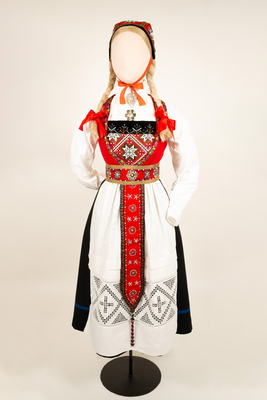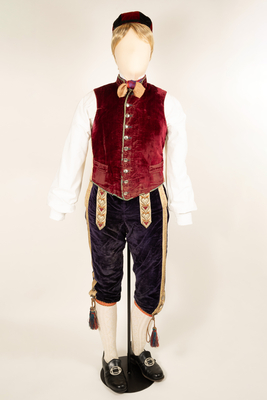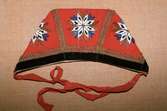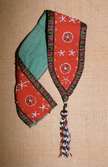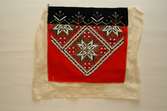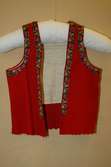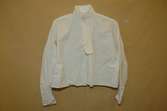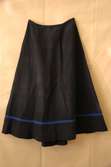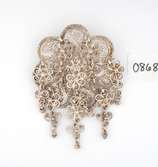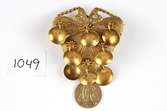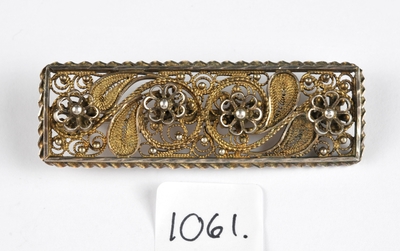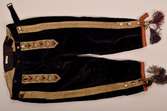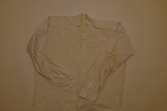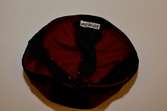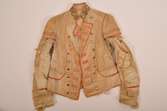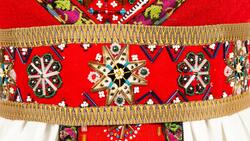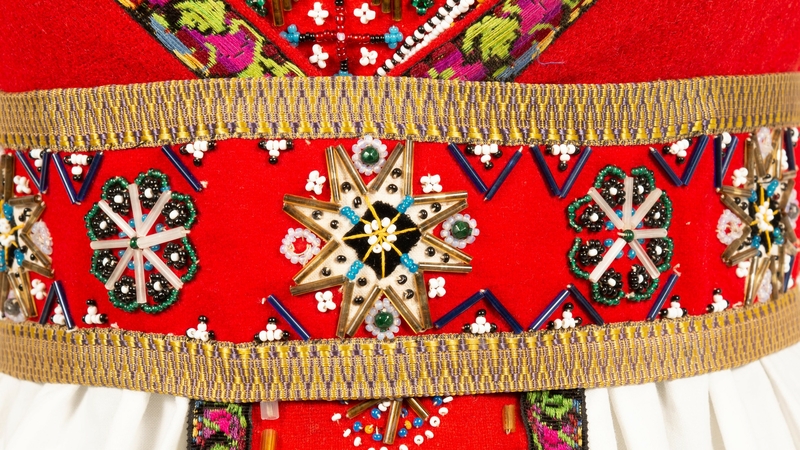
Dronning Maud (1869-1938)
Dronning Maud i hardangerbunad vart eit symbol for den nye nasjonen Noreg.
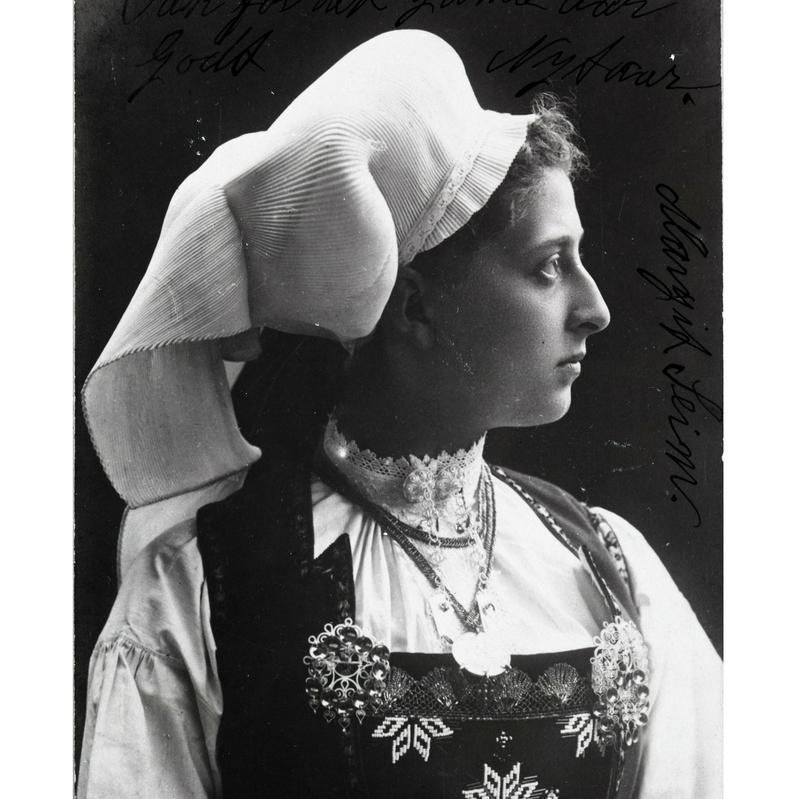
Frå midten av 1800-talet blomstra nasjonalromantikken i Noreg. Alt som skilde Noreg frå Danmark og Sverige, vart løfta fram. Utanlandske og norske målarar reiste landet rundt for å måle dramatiske landskap, folkeliv og folkedrakter. På denne tida vart Noreg ein populær turistdestinasjon, og overklasse frå heile Europa vitja landet.
Blant dei mange turistane fann ein også medlemmar av det engelske kongehuset. I 1893 kom prinsesse Maud av Wales saman med mor si, dronning Alexandra, og søster si, prinsesse Victoria. I løpet av opphaldet vart Maud fotografert av Karl Nyblin i studioet hans i Bergen. Ho poserte i nasjonaldrakt, ein rekvisitt som høyrde til fotostudioet. Kvinner over heile landet tok no i bruk den såkalla Nasjonalen, ei forenkla utgåve av folkedraktene frå Hardanger.
I 1906 vart Maud krona til dronning av Noreg. På ei vitjing i Hardanger same året fekk ho ein hardangerbunad i gåve. Bunaden var sydd av Anna Jordal, som hadde drakthandel i Odda. Dronninga brukte bunaden allereie same kvelden, i ei mottaking. Fotografiet av prinsesse Maud i hardangerbunad frå 1893 fekk nytt liv, det vart trykt opp som postkort og plakatar.
Truleg brukte ikkje dronning Maud bunaden så mykje, men ho vart likevel ein del av bunadhistoria, som eit sterkt symbol. For fyrste gong på fire hundre år fekk folk sjå dronninga av eit sjølvstendig Noreg, kledd i noko av det norskaste ein kunne tenkje seg.
Artikkelen er ein del av utstillinga Fyrstedamer i bunad.
National romanticism flourished in Norway from the middle of the nineteenth century, venerating anything that distinguished Norway from Denmark and Sweden. Artists from Norway and abroad travelled around the country painting dramatic landscapes, the lives of ordinary folk and the clothes they wore. At this time Norway was a popular tourist destination, and the upper classes from all over Europe visited the country.
Members of the British royal family were among the many tourists. In 1893, Princess Maud of Wales arrived together with her mother, Queen Alexandra, and her sister, Princess Victoria. During their stay, Maud was photographed by Karl Nyblin in his studio in Bergen. She posed in national dress, a prop that belonged to the photography studio. Women all over the country now took to using what was known as the National, a simplified version of the folk dress from Hardanger.
In 1906, Maud was crowned Queen of Norway. During a visit to Hardanger that same year, she was given a Hardanger bunad as a gift. The bunad was made by Anna Jordal, who had a dress shop in Odda. The queen most probably only wore it once, that same evening. The photograph of Princess Maud in a Hardanger bunad from 1893 gained a new life, being printed as postcards and posters.
Queen Maud likely wore a bunad only once, at the photographer’s studio, but as a powerful symbol she nevertheless became a part of the story of the bunad. For the first time in four hundred years, people were able to see the queen of an independent Norway – dressed in one of the most Norwegian things imaginable.
This article is a part of the exhibition Leading Ladies in Bunad
